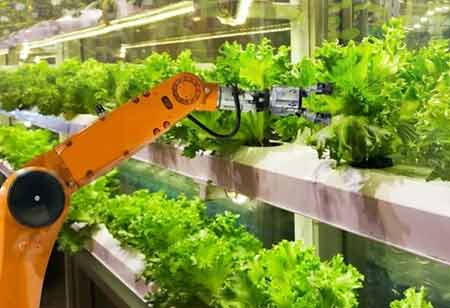Thank you for Subscribing to Agri Business Review Weekly Brief
Applications Of GIS In Agriculture
In the last few decades, the general improvement of technology has aided GIS in agriculture. GIS in agriculture is all about evaluating the land, displaying field data on a map, and putting that information to good use.

By
Agri Business Review | Thursday, January 21, 2021
Stay ahead of the industry with exclusive feature stories on the top companies, expert insights and the latest news delivered straight to your inbox. Subscribe today.
In agriculture, GIS is used to maximize yields, cut costs, and prevent damage from natural disasters by putting field data to work.
Fremont, CA: In the last few decades, the general improvement of technology has aided GIS in agriculture. GIS in agriculture is all about evaluating the land, displaying field data on a map, and putting that information to good use. Precision farming, which is based on GIS, allows farmers to make informed decisions and take action in order to get the most output from each acre while minimizing environmental impact. Geospatial technology in agriculture depends on satellites, aircraft, drones, and sensors, to name a few tools. These technologies are used to create images and connect them to maps and data that hasn't been displayed. As a result, farmers will obtain a map with information about crop location and health, geography, soil type, fertilizer, and other factors.
Here’s how GIS is used in agriculture:
Crop yield prediction
Accurate yield forecasting can help governments in ensuring food security, as well as businesses in forecasting revenues and budgeting. These forecasts may be possible thanks to recent technological advancements that integrate satellites, sensors, big data, and AI. Convolutional Neural Networks (ConvNets or CNNs) is one of the most advanced techniques in this field. A ConvNet is a deep learning algorithm that is trained to identify a crop's productivity. To uncover productivity patterns, developers give this system photos of crops whose yield is previously known.
Monitoring livestock
The tracking of specific animals' movements is the most basic application of farm GIS software in animal husbandry. This makes it easier for farmers to locate them on a farm and keep track of their health, fertility, and nutrition. Trackers implanted on animals and a mobile device that receives and visualizes information from those trackers are two GIS services that enable you to do so. Farmers are not required to enter that information manually. Meanwhile, if the animal's weight changes in an alarming way, they can promptly locate it and assess its condition.
Automated farming
Seeding robots, intelligent irrigation systems, self-driving harvesters, and weed-removal robots are changing the future of agriculture. In farming, GIS can give detailed maps with all of the information needed on the crops in the field. These types of maps are known as task maps or application maps. They are used by smart devices to care for the field. Task maps can help unskilled workers accomplish their jobs more efficiently, in addition to providing signals for robots.





